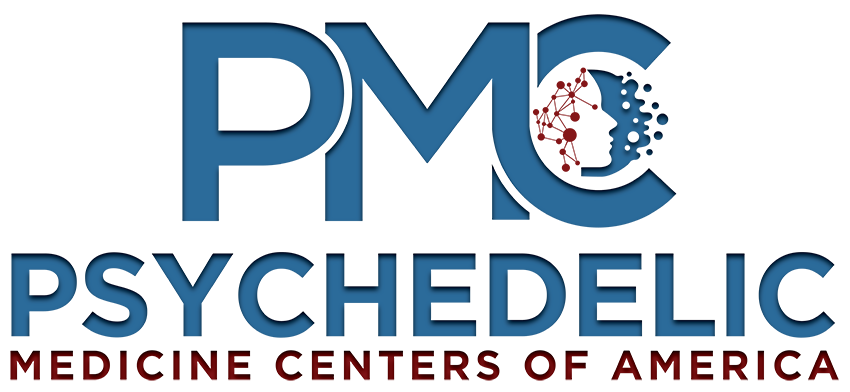Table of Contents
ToggleHow Ketamine Can Help For Migraines?
You’re no stranger to migraines and their crippling effects. You’ve tried it all, but relief seems elusive.
Well, there’s a new player in town – ketamine therapy. It’s making waves as a potential solution for chronic migraines.
Let’s dive into how this anesthetic could be your key to managing migraine pain.
It’s time to explore this innovative treatment – because you’re not alone, and with ketamine, relief might be closer than you think.
Key Takeaways
- Migraines can severely impact work, social life, and sleep.
- Ketamine therapy can be an effective solution for migraines when other treatments have not provided significant relief.
- Ketamine blocks neurotransmitters from reaching N-methy-D-aspartate receptors in the brain and spinal cord, reducing the pain signal.
- Possible side effects of ketamine therapy include drowsiness, agitation, nausea, hallucinations/delirium, slurred speech, and amnesia.
Understanding Migraines and Their Impact
Let’s dive into understanding migraines, a debilitating condition that can turn your life upside down, severely impacting your work, social interactions, and sleep. These intense headaches can become a chronic issue, occurring 15 or more times a month. Unfortunately, there’s no known cure for this frequency of migraines, commonly known as chronic migraines.
Migraines typically present with moderate-to-severe pain on one side of the head and can last from a few hours to several days. During an episode, you may experience nausea, vomiting, fatigue, sensitivity to light, sound, and smells, and facial pain. Triggers can include stress, hormone imbalances, additives in food, changes in weather, dairy products, and alcohol consumption.
Neurogenic inflammation plays a significant role in the pathophysiology of migraines. This involves the release of vasoactive neuropeptides, such as CGRP and Substance-P, contributing to the pain. Serotonin receptors located in the trigeminovascular system, thought to be involved in pain transmission, can modulate the release of these neuropeptides. Other factors involved in this inflammation and the resulting migraines include nerve growth factor (NGF), nitric oxide (NO), prostaglandins, gamma-aminobutyric acid (GABA), and capsaicin.
Various over-the-counter and prescription medications can help prevent or reduce the severity of migraines. However, if these treatments don’t provide significant relief, ketamine therapy may be an effective solution. A study by the American Society of Anesthesiologists showed that 75% of participants reported improvement in migraine pain after ketamine infusion, offering hope for a more effective treatment for this debilitating condition.
Identifying Migraine Symptoms and Triggers
To better manage your migraines, it’s essential to recognize both the symptoms and triggers.
The symptoms can range from moderate to severe pain that can last for hours or even days.
Understanding your personal triggers, which could include stress, certain foods, or weather changes, can help you preemptively mitigate these debilitating headaches.
Understanding Migraine Symptoms
You need to understand the symptoms and triggers of migraines to effectively manage and treat this debilitating condition. Migraine symptoms vary for everyone, but there are common signs that can help you identify when a migraine is happening or about to happen.
Recognizing Migraine Triggers
Understanding your migraine triggers is a crucial part of managing your condition effectively. It’s important to closely monitor your daily activities, diet, sleep patterns, and stress levels to identify what might be setting off your migraines. Common triggers can include certain foods, alcohol, caffeine, lack of sleep, or even changes in the weather.
Keep a migraine diary to track the onset of your migraines, what you were doing prior, and what you ate or drank. This can help you find patterns and possibly identify your personal triggers.
The Role of Ketamine in Pain Reduction

In your journey towards finding relief from migraines, it’s important to understand how ketamine plays a significant role in pain reduction. This dissociative anesthetic primarily antagonizes the N-methyl-D-aspartate (NMDA) receptor, a crucial player in pain transmission. When used in lower sub-anesthetic doses, ketamine has shown promising results in pain management.
Here’s a breakdown of how ketamine aids in pain reduction:
- Acting as an Anti-Hyperalgesic and Anti-Allodynic Agent:
- Ketamine, in lower doses, can fend off hyperalgesia, an increased sensitivity to pain.
- Allodynia, a condition where ordinary stimuli cause pain, can also be mitigated by ketamine.
- Protecting against Tolerance:
- Regular use of pain medication can lead to tolerance, requiring higher doses for the same effect.
- Ketamine, however, has been found to protect against this tolerance.
- Other Research Findings:
- Studies like ‘Low doses ketamine: antihyperalgesic drug, non-analgesic’ and ‘Use of oral ketamine in chronic pain management: a review’ support the positive role of ketamine in pain management.
It’s essential to consider that ketamine therapy isn’t for everyone. Like any medication, it comes with potential side effects, including drowsiness, agitation, and nausea. Always consult your healthcare provider before starting any new treatment plan. They can guide you to the best options for your unique situation.
Evaluating Ketamine Therapy for Migraines
When considering ketamine therapy for your migraines, it’s crucial to evaluate its potential benefits and drawbacks based on the most recent research and clinical trials. The team of researchers at the University of Southern California recently explored this topic, providing valuable insight into the use of ketamine for migraine treatment.
Ketamine, traditionally used as an anesthetic, has demonstrated its potential in reducing migraine pain. However, like all medications, it’s not without side effects. Some of the drawbacks include an increase in intraocular pressure, nystagmus, hypertension, and in some cases, psychological effects such as delirium and psychosis.
Despite these potential side effects, the relief that ketamine provides for intractable headaches might make it a suitable alternative when conventional treatments fail. You must weigh these factors and discuss them with a healthcare professional to make an informed decision.
Steps Towards Ketamine Treatment
Getting started with ketamine treatment for migraines involves several important steps.
First, you’ll need to consult with your doctor to see if you’re a good candidate for this therapy.
It’s essential that you understand the potential side effects and know what to expect for post-treatment care.
Consulting Your Doctor
Before you jump into ketamine treatment for migraines, it’s crucial to consult with your doctor to discuss potential risks and benefits. Your doctor can provide valuable advice based on your medical history and current health status.
Pre-consultation preparations could involve: – Gathering information about your migraine history – Noting down any questions you have about ketamine treatment
During the consultation, your doctor may: – Assess your overall health and suitability for ketamine treatment – Discuss potential side effects and how to manage them
Post-consultation steps could include: – Reflecting on the information and advice provided – Planning for the next steps if you decide to proceed with ketamine treatment
Ketamine Therapy Eligibility
In the wake of discussing your migraine history and potential treatment options with your doctor, you might be considering whether you’re a good candidate for ketamine therapy. It’s essential to know that not everyone is eligible. Here is a brief rundown on your next steps.
Firstly, you’ll undergo a clinical assessment to ascertain your medical history and the severity of your migraines. If traditional treatments haven’t worked for you, ketamine might be an option. However, you mustn’t have a history of psychosis or severe heart disease. Also, if you’re pregnant or nursing, ketamine isn’t recommended.
Next, your doctor will determine the appropriate dosage and administration method for you. Some patients may receive intravenous treatments, while others might use a nasal spray or lozenges. Remember, this treatment should be part of a comprehensive migraine management plan.
Understanding Potential Side-Effects
Awareness of potential side effects is a crucial part of your journey toward considering ketamine treatment for migraines.
- Physical Effects
- Initially, you might experience nausea or dizziness.
- Some patients report an increase in blood pressure and heart rate.
- Psychological Effects
- You may feel disconnected or have hallucinations during the infusion.
- Some patients report anxiety or restlessness post-treatment.
- Long-term Effects
- Frequent use may lead to cognitive issues, though more research is needed on this aspect.
Post-Treatment Care
Once you’ve thoroughly considered the potential side effects and decided to proceed with ketamine treatment, it’s crucial to understand what post-treatment care involves.
You may feel a bit drowsy or disoriented immediately after the session, so it’s important to have someone drive you home. Avoid operating heavy machinery or making critical decisions for 24 hours following your treatment.
Stay hydrated and eat a balanced diet to help your body recover. It’s normal to experience some temporary side effects like headaches or nausea, but these should subside within a few hours. If they persist, don’t hesitate to contact your healthcare provider.
Regular follow-ups with your doctor are essential for monitoring your progress and adjusting treatment as necessary. Remember, post-treatment care is key to maximizing the benefits of ketamine therapy for migraines.
Included Studies and Patient Demographics When Using Ketamine For Migraines
You’ll find various studies that include diverse patient demographics when examining the use of ketamine for migraines. These studies delve deep into the effects of ketamine on patients suffering from chronic migraines and provide valuable insights into its effectiveness as a treatment option.
One such study involves a group of patients aged 18 to 55, all diagnosed with chronic migraines. This group, made up of both males and females, was administered with intranasal ketamine over a period of six months. The results showed a significant reduction in the frequency and intensity of migraine attacks.
Another study focused on patients aged 25 to 60 years old, who were administered intravenous ketamine. The findings from this study were similar to the first, showing that ketamine significantly reduced the severity of migraines in the majority of participants.
A third study involved a group of patients with episodic migraines. The patients, aged 30 to 50, were given ketamine infusions over a period of three months. The results displayed a substantial decrease in the occurrence of migraines in these patients.
These studies provide a comprehensive view of the varying patient demographics when considering ketamine as a treatment for migraines. They demonstrate that ketamine can be an effective solution for patients of various ages and genders who suffer from chronic or episodic migraines. Understanding these studies can aid in making informed decisions about incorporating ketamine into a migraine management plan.
Ketamine Treatment Methods For Migraines and Follow-up Times
The various methods of administering ketamine for migraine relief can include infusions, nasal spray, oral medication, or intramuscular injection, and it’s important to understand how each one works and what to expect during the follow-up period. Infusions involve a controlled intravenous delivery of ketamine over a specific time frame, often in a clinical setting. Nasal sprays and oral medications offer a less-invasive approach, while intramuscular injections can deliver a more concentrated dose directly into the muscle.
The follow-up times can vary depending on your personal response to the treatment and the severity of your migraines. During these follow-ups, your healthcare provider will monitor your progress, adjust dosages if needed, and manage any potential side effects.
Reviewing Adverse Events and Outcomes
In your journey to understand how ketamine helps with migraines, it’s crucial to consider the potential adverse events and outcomes associated with its use. While the benefits of ketamine for migraine relief are promising, like any drug, it comes with potential risks and side effects.
Here are some potential adverse events and outcomes you should consider:
- Physical effects: These might include nausea, increased heart rate, or changes in blood pressure.
- Nausea: This is a common side effect but can usually be managed with other medications.
- Increased heart rate or blood pressure: These are typically temporary and monitored closely during treatment.
- Psychological effects: These might include hallucinations, anxiety, or changes in mood.
- Hallucinations: These are typically short-lived and occur during the infusion.
- Anxiety or mood changes: If you have a history of mental health disorders, ketamine might exacerbate your symptoms.
- Long-term effects: The long-term effects of ketamine treatment for migraines are still being studied.
- Dependency: There’s a risk of dependency with repeated use.
- Unknown effects: As this is a relatively new treatment, the long-term effects aren’t fully known.
Frequently Asked Questions
What Is the Cost of Ketamine Therapy for Migraines?”
You’re asking about the cost of ketamine therapy for migraines.
It can vary widely depending on your location, the clinic, and the specific treatment plan. Typically, it’s not covered by insurance, as it’s often considered an off-label use for migraines.
Prices can range from $400 to $800 per infusion session.
It’s best to contact local clinics for exact pricing and to see if your insurance is accepted.
How Quickly Can a Patient Expect to See Improvement in Migraine Symptoms After Starting Ketamine Therapy?”
After starting ketamine therapy, you might notice improvements in your migraine symptoms fairly quickly. Some patients see a reduction in pain severity within hours of their first treatment, while others may take a few days or treatments to feel a significant change.
It’s important to remember results vary, so it’s crucial to maintain open communication with your healthcare provider about your progress.
Is Ketamine Therapy for Migraines Covered by Insurance?”
Coverage for ketamine therapy for migraines varies by insurance company. It’s important to check with your provider to see if this treatment is included in your plan.
If it’s not, don’t lose hope. Some clinics offer payment plans or financial assistance. Remember, it’s your health at stake and exploring all options is critical.
Are There Any Lifestyle Changes or Dietary Restrictions Required When Undergoing Ketamine Therapy for Migraines?”
While undergoing ketamine therapy for migraines, you aren’t usually required to make specific lifestyle changes or dietary restrictions.
However, it’s always a good idea to maintain a healthy lifestyle. This includes regular exercise, a balanced diet, and sufficient sleep.
Additionally, avoiding known migraine triggers can be beneficial.
It’s important to discuss any concerns or questions with your healthcare provider before starting any new treatment.
Can Ketamine Therapy for Migraines Be Combined With Other Treatments or Medications?”
Yes, you can combine ketamine therapy with other treatments or medications for migraines. It’s important to discuss all medications you’re currently taking with your doctor. They’ll ensure there’s no risk of adverse interactions.
Combining therapies can often enhance the effectiveness of your treatment plan. Remember, every person’s situation is unique, so it’s crucial to tailor the approach to your specific needs.
Conclusion
In your struggle with migraines, ketamine therapy could be a game-changer. It’s a fresh approach, targeting pain reduction differently than traditional treatments.
While it’s vital to consider potential side effects and safety, the positive impact on your quality of life might be worth the exploration.
Research is still ongoing but initial studies show promise. Remember, you’re not alone in this fight. With innovations like ketamine treatment, relief could be just around the corner.


